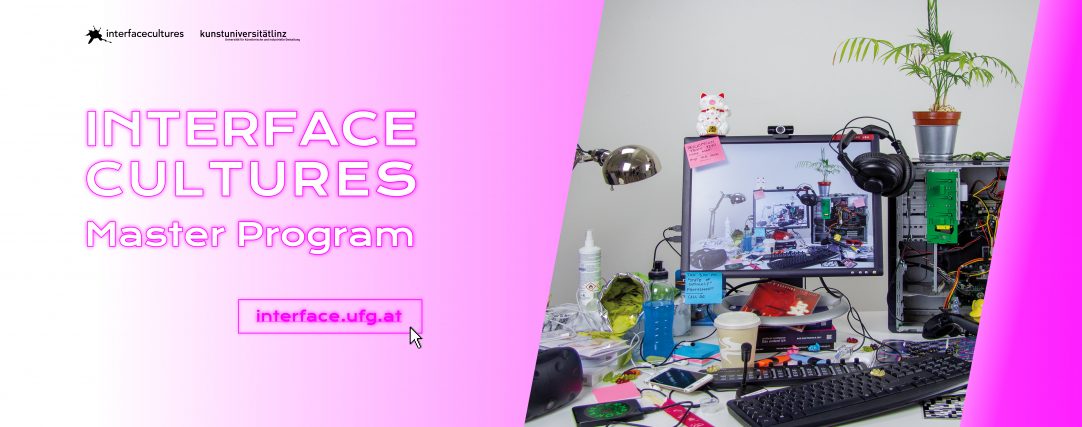Open Day with Brunch Lecture & Exhibition CROSS SECTIONS – SEDIMENTS OF A NEAR PAST
Open Day with Brunch Lecture & Exhibition CROSS SECTIONS – SEDIMENTS OF A NEAR PAST

Brunch Lecture with Danja Vasiliev, Marta Peirano and Gordan Savicic
Media Archeology Exhibition – Interface Cultures DepartmentOpening: March 20th, 2024, as part of the OPEN DAY of the University of Arts Linz.
Vernissage: March 20th, 17.00 with the performance “Emulavoce” by Andrea Corradi
Closing: March 24th, 2024
Opening hours: 9 a.m. to 5 p.m.
The Interface Cultures department presents an exhibition born out of the Archaeology of Media 22/23 course, led by Gebhard Sengmüller. The exhibition explores the forgotten histories of media and their implications in our contemporaneity.
“The concept behind the exhibition Cross-sections lies in uncovering the hidden layers of media, where the boundaries of time and perception intertwine to form an interconnected narrative. We speak of the near past as the technologies of time have had profound repercussions on our present, historicized echoes that we nevertheless tend to forget and thus fall within the crevice of media archaeology.
Rather than a linear narrative, the exhibition seeks to unveil the parallel, forgotten and even fictitious strands of the development of contemporary media apparatuses. The focus is on presenting a more nuanced understanding of the evolution of media emphasizing artifacts, lost innovations, and the critical role of artists in the reuse of obsolete technologies. Each artwork presented is intended as a cross-section, a horizontal layer of media stratification, aimed at reevaluating media artifacts. By making the unseen visible within their artistic frames, the artists lead us on a voyage through the intricate topics of identity, relationships, and communication.”
Behiye Erdemir & Martina Pizzigoni / Curators and Project Managers
Interface Cultures’ Master students Behiye Erdemir and Martina Pizzigoni are in charge of curating this exhibition, aiming to guide visitors through these hidden narratives, emphasizing the critical role of media archaeology in shaping our technological present.
The proposed exhibition is a curated collection of artworks that intricately navigate the intersection of historical and contemporary media technologies, where artists delve into the layers of our shared technological history, revealing the impact of media on personal narratives and collective experiences. The selected artworks were realized after the lectures and the workshop on Media Archaeology led by Gebhard Sengmüller, as part of the Interface Cultures program 2022/2023.
In contrast to a more conventional media history lecture, this class is orientated towards exploring a more hidden media history. This secret or forgotten history deals with parallel, presumably lost, little-noticed, perhaps even fictive strands in the development of today’s media apparatuses. In this time of rapid development of new technologies that are becoming obsolete faster and faster, it is interesting to create archaeology of individual media. In the theoretical and practical course, we look at how artists use artefacts of media machines and media technologies in their practice, how this developed into previously unplanned hybrids, opened unknown back doors, and often turned original flaws into strengths. We discuss how art practitioners, who are critically questioning progress per se by deliberately using outdated generations of hardware and software, prefer low-tech not only for aesthetic reasons but also for the economic implications involved.
EXHIBITING ARTISTS AND ARTWORKS
Viktoria Angyal, Davide Bruno, Andrea Corradi, Alex Fallica, Joann Lee, Jelena Mönch, Maria Orciuoli, Linaá Pulido Barragán, Danielius Šermukšnis, Emma Silvana Tripaldi, Sofia Talanti
Unseen signals, (2022) by Viktória Angyal, Linaá Pulido Barragán, Jelena Mönch, Davide Bruno
Emulavoce, (2024) by Andrea Corradi
SetteVoci (The LostMedia Project), (2024) by Alessia Fallica
Interlaced Persona, (2023) by Joann Lee
Untitled (Passport Hologram), (2023) by Maria Orciuoli
Transposition I, (2024) by Danielius Šermukšnis
Amo io mi amo, (2024) by Sofia Talanti
Resonating Absence, (2023) by Emma Silvana Tripaldi
About the curators:
Behiye Erdemir (TR) is currently pursuing her MA in Interface Cultures at Kunstuni Linz with a background in engineering. She focuses on the politics of artefacts such as electronic devices, algorithms, and software. Erdemir explores absurd yet plausible approaches to these artefacts by intervening in their predetermined designs and functions for her artistic practice. Recently, she exhibited at the Ars Electronica Festival 2022-2023, Arse Electronica Festival 2023, and Rundgang 2023. She also presented in Deep Space 8K at the Ars Electronica Center in June 2023. Additionally, she had the opportunity to take on the role of Production Coordinator for the Resonating Selves Exhibition/Ars Electronica Festival 2023.
Martina Pizzigoni (IT) is a multimedia artist. After a BA in NTA at the Academy of Fine Arts in Venice, in 2021 they got an MA in Cultural Project Management at the Università Cattolica and Politecnico di Milano, they are currently attending the Interface Cultures MA at the Kunstuniversität Linz. Pizzigoni’s artistic practice focuses on the creation of interactive experiences, while their main research is the habit we live in, with the socio-anthropological implications that characterise our digitally dominated society. They are part of the MAalex artistic and curatorial duo. Some of their latest exhibitions include Ars Electronica Festival 2023, Linz, Speculum Artium Festival, Trbovlje (SLO) and Pixxelpoint Festival 2023, Nova Gorica (SLO). Their last curatorial project was Hyper*Espresso, digital art pavilion of The Wrong Biennale 2023/2024.
Graphics by Ozan Tezvaran
